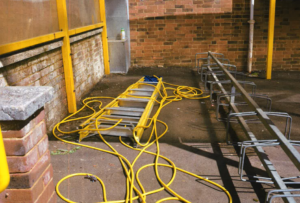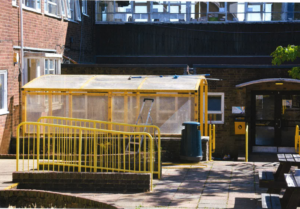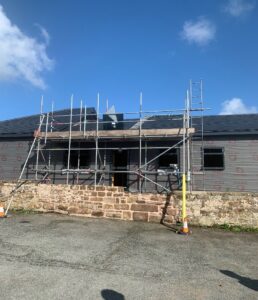Company fined after worker loses parts of fingers
A manufacturing company has been fined after an employee lost parts of two fingers when his hand got caught in a machine producing face masks.
The 55-year-old machine operator was working a night shift for Alpha Solway Limited at the company’s Yew Tree Way site in Warrington, on 22 April 2021.
After spotting a problem with one of the firm’s HX machines, the man attempted to adjust the machine. He had noticed the material heading into the HX machine was folding itself and needed to be flat.
The worker then opened the doors, which were already slightly opened, to the HX machine while it was still running and began adjusting the material.

This led to the man’s right hand being caught by the HX machine resulting in most of his little finger and ring finger being ripped off. The man was later hospitalised for three days with his injuries now affecting his everyday life, causing debilitating pain and preventing him from doing manual work.
A Health and Safety Executive (HSE) investigation found Alpha Solway Limited had failed to provide suitable guarding around its HX machines. The company had also failed to undertake and prepare a risk assessment before the HX machines were used. Employees had not been properly trained on how to safely use the HX machines nor were they appropriately supervised and monitored while using the machines with its guards open.
HSE guidance on equipment and machinery can be found here: Equipment and machinery – HSE
Alpha Solway Limited, of Hangcliff Lane, Lerwick, Shetland, Scotland, pleaded guilty to breaching section 2(1) of the Health and Safety at Work etc. Act 1974. The company was fined £66,000 and ordered to pay £5,440.70 in costs at Warrington Magistrates’ Court on 7 March 2023.
HSE inspector Roger Clarke said: “This injury was easily preventable and the risk should have been identified. Employers should make sure they properly assess risk and apply effective control measures to minimise the risk from dangerous parts of machinery.”
Notes to Editors:
- The Health and Safety Executive (HSE) is Britain’s national regulator for workplace health and safety. We prevent work-related death, injury and ill health through regulatory actions that range from influencing behaviours across whole industry sectors through to targeted interventions on individual businesses. These activities are supported by globally recognised scientific expertise. hse.gov.uk
- More about the legislation referred to in this case can be found at: Construction – Health and safety for the construction industry (hse.gov.uk)
- HSE news releases are available at http://press.hse.gov.uk
- HSE guidance on equipment and machinery can be here: Equipment and machinery – HSE
 The campaign, called
The campaign, called 


